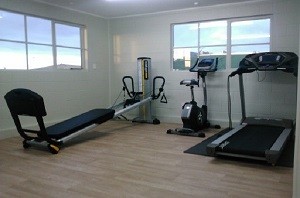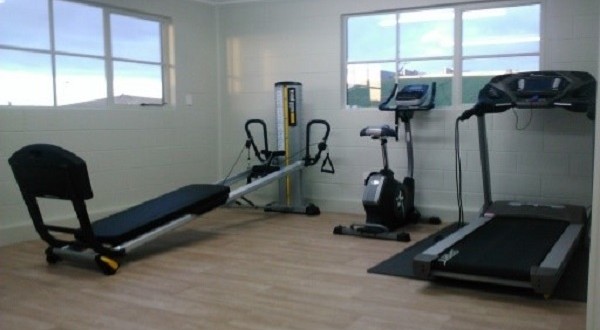Lower back pain is one of the most common ailments that people suffer from in New Zealand, and also western society in general.
It costs vast amounts of money each year to the economy. In the past year ACC has spent over $300,000,000 on Spine/Back injuries. That is A LOT of money!! It is also one of the leading causes of missed days at work, responsible for over 40% of missed days in the USA.
 Most back pain is benign and in the majority of cases there is nothing serious happening in terms of actual tissue damage, even if the pain can be excruciating. Here is a link to one of the world’s leading authorities on back pain describing the most common sources of low back pain. It is not always a major injury and it is highly unlikely that anything is ‘out of place’ or that you need to be ‘re-aligned’ to improve your symptoms.
Most back pain is benign and in the majority of cases there is nothing serious happening in terms of actual tissue damage, even if the pain can be excruciating. Here is a link to one of the world’s leading authorities on back pain describing the most common sources of low back pain. It is not always a major injury and it is highly unlikely that anything is ‘out of place’ or that you need to be ‘re-aligned’ to improve your symptoms.
There are three main types of low back pain.
Mechanical low back pain:
• Mechanical low back pain is the most common type. It is usually just a ligament sprain, joint stress, muscle tightness or nerve root irritation.
• Pain from mechanical low back pain can be extreme and result in muscle spasm, loss of movement and sometimes days off work.
• Pain is usually localised to the lower back, hips, buttocks, or back of the thigh.
• Certain movements make the pain worse, like arching backwards or bending over, rolling over in bed, etc.
• Most will get better in a few weeks.
• But 30% have a recurrence or pain within 6 months and 40% have a recurrence within a year.
• This can turn in to a chronic vulnerability with regular recurrence.
• Then physical activity/work/family life may begin to suffer.
• If you are a sufferer of ongoing long term mechanical low back pain, research has shown that creating a back resilience plan or back management plan with your multidisciplinary support team (Physio, GP, Partner, etc.) can be really helpful.
• This support team can help you deal with factors that have been shown to aggravate low back pain including stress, poor physical fitness, general weakness, poor postures, smoking etc.
• Physiotherapy is one aspect of this back care team that can make a difference to your underlying weakness and get to the bottom of this chronic vulnerability.
• Movement is best for this type of back pain. Bed rest is not usually recommended, however pain relief from your GP might also help in the acute stages.
Radicular pain:
• This is pain that may originate from a disc pressing on a nerve in your back.
• The pain is usually worse in the leg. You may have heard of the term ‘Sciatica’ (pain in the back of the leg to the foot) or even ‘Femoratica’(pain in the front of the leg).
• Pain can be felt as far down as the foot and usually eases when lying down.
• This pain also gets better but it is important to get this checked out by your physio or GP.
• These take longer to heal that mechanical pain. Usually somewhere between 10-12 weeks. Longer if there is weakness or numbness associated with it.
• Your GP can help with pain relief which may be needed in the early stages.
• If you test positive with certain tests in the clinic then a specialist referral may be needed.
• Sometimes even imaging for example x-ray or MRI may be required but only is surgery is being considered or if the imaging will change management of the pain in some way. Believe it or not, the MRI and X-ray findings in the lower back are remarkably similar in healthy vs painful backs. So these are mainly used to rule out sinister pathology or if surgery is being considered.
Neurogenic claudication:
• This type of pain is less common and is usually associated with people over 60 years of age.
• It usually presents as heaviness in the legs during activity. It eases when sitting or bending forward.
• This type of pain is usually due to a narrowing of the spinal canal as you get older. This is called ‘stenosis’.
• A physiotherapy assessment and a tailored exercise program can help with this type of back pain. It will not change the narrowing of your spinal canal but will give you safe ways to exercise and keep active to help manage the symptoms.
As mentioned above, it is known in the research that low back pain has a high recurrence rate (30-40%) and that ongoing symptoms can persist for weeks to months and even years. This can affect your walking, running, swimming, gardening, socialising, and even family life.
Often people may get 80-90% better but maybe develop a changed or altered movement pattern to prevent the remaining pain. This is called fear avoidance.
Examples include getting up from a chair and feeling the need to push up from your thighs with your hands, or having discomfort putting on your socks in the morning.
We know from research that keeping active is the most important part of staying healthy as we get older and you need to have a functioning back to allow you to complete most of these tasks, watch this interesting video on the subject here.
So if you have acute back pain or long term niggling back pain that you may have grown to accept, or if your physical activity is limited due to a back issue, don’t suffer and accept this as ‘something you will have to live with’.









Join the Discussion
Type out your comment here:
You must be logged in to post a comment.